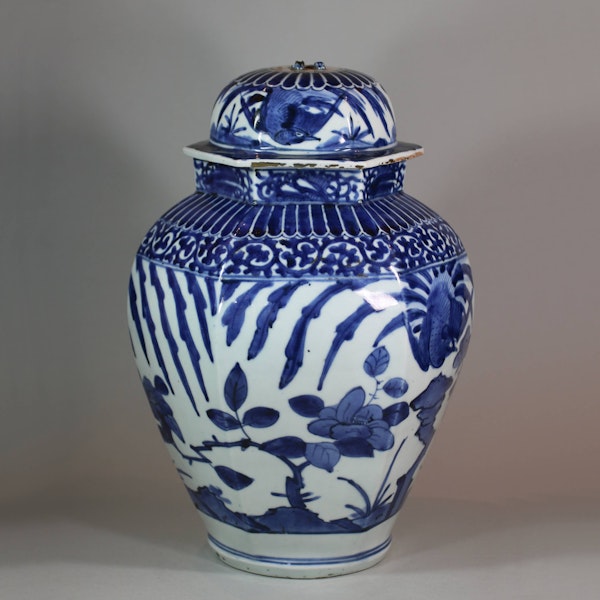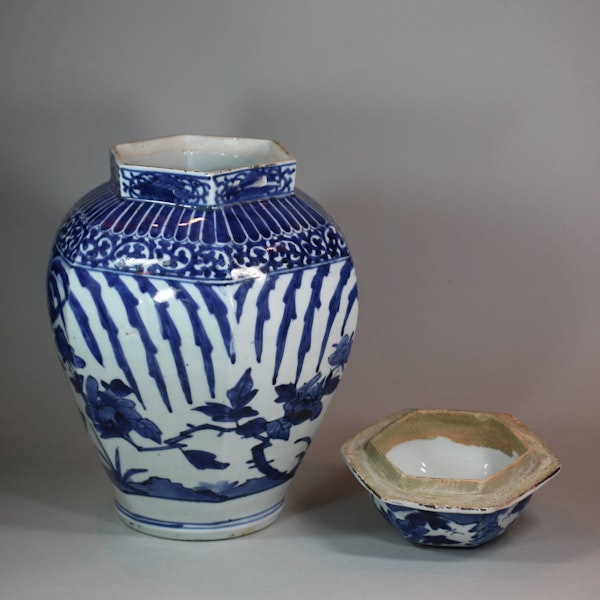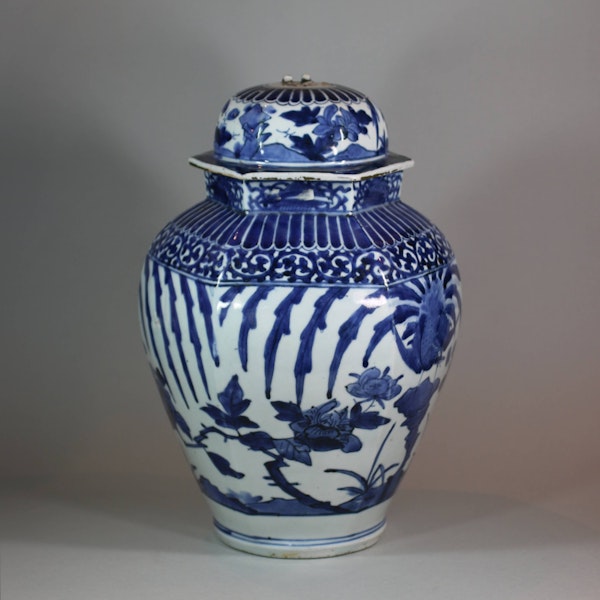Japanese Arita blue and white jar and cover, circa 1680
Japanese Arita blue and white jar and cover, circa 1680
POA
Description
Japanese Arita blue and white jar and cover, circa 1680, of hexagonal form with wide shoulders and tapering foot, the body decorated in underglaze cobalt blue with a continuous landscape containing a pair of ho-ho birds amongst flowering peony branches and rockwork, their long tail feathers spreading out across the surface of the vase, the shoulders with bands of karakusa and lappets, the neck with beribboned precious objects including an artemisia leaf, the cover with a further ho-ho bird in a rocky garden setting and band of petal lappets.
Condition: Finial of cover damaged
Notes: Often referred to in Japan as a ‘Chinese phoenix’ as it originated in China before being transmitted to Japan, most likely during the Asuka Period (538–710 C.E.), the Japanese phoenix (鳳凰, hō-o) shares some of its symbolism with its Chinese counterpart. In ancient China, the ‘fenghuang’ had consisted of two separate entities to represent yin and yang; the male bird (鳳, feng) and female (凰 huang). However, during the Ming the two gradually merged to become the symbol of female royalty. In Japan the phoenix represents renewal of life and the balancing of opposites, and has long been associated with the Imperial Family (indeed, it features on the Imperial throne and is can also be found on the 10,000 yen note). Usually depicted as a magnificent beast with brilliant plumage and sometimes with the neck of a snake and a tortoise-like back, it has been a popular decorative motif in Japanese art since at least the Nara period, and also features heavily in ceramic, lacquer and textile design. Several extant examples of early architecture feature the hō-o, perhaps most notably the ceiling of the Western Gate of the Main Hall at the Houryūji temple complex in Nara, the oldest parts of which date back to the 7th century. Initially, designs incorporating the phoenix seem to have retained a strong connection to the symbol’s Chinese origins, with the bird often shown perching in a paulownia (a tree native to China) or amongst the arabesque pattern known as karakusa (唐草 literally, ‘Chinese grasses’). However, over time artists began to replace these ‘Chinese’ motifs with seasonal ‘Japanese’ ones such as wild grasses, peony, chrysanthemum and prunus, reflecting the assimilation of the phoenix into a specifically Japanese iconography.
| item details | |
|---|---|
| Material and Technique | Porcelain with underglaze cobalt blue decoration |
| Origin | Japanese |
| Period | 17th Century |
| Dimensions | Height: 34.3cm. (13 ½ in.) |
Product REF: U974












